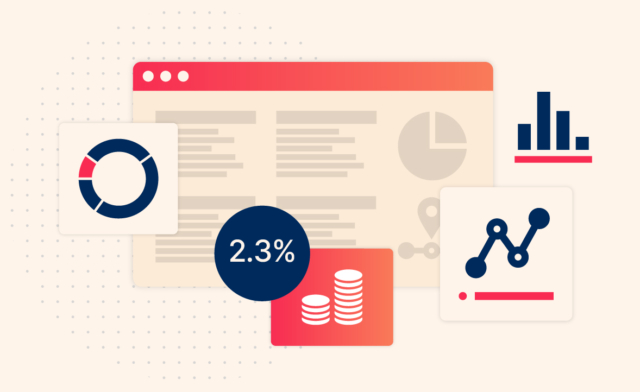What Is an ATS Data Migration? How to Plan For a Smooth Transition

Planning a major hiring expansion is exciting, until you realize your current applicant tracking system (ATS) can’t keep up. Automation is supposed to streamline the process, but if your team is working harder just to manage recruiting tasks, it’s a sign your system is holding you back. That’s where ATS data migration comes in: the process of moving your existing recruiting data into a more powerful, modern solution.
But switching systems is a big step. How do you justify the change, and what does it really take to move your data?
This guide will walk you through everything you need to know about ATS data migration, from building a business case to planning, transferring your data, and ensuring a smooth launch with your new system.
What Is an ATS Data Migration?
An ATS data migration is the process of transferring recruiting data, such as candidate profiles, resumes, job postings, interview notes, and historical records, from one applicant tracking system (ATS) to another.
It’s a key step when upgrading to a new ATS, ensuring valuable hiring information is preserved and accessible in your new platform. The goal is to move data efficiently and accurately, with minimal disruption to your recruiting operations.
Why Should You Change Your ATS?
Changing your ATS can significantly improve the efficiency and effectiveness of your hiring process. Switching to a more capable system and completing a successful ATS data migration can lead to faster hiring, better candidate experiences, and a more productive recruiting team.
Here are some common reasons organizations make the switch:
-
Outdated technology: Legacy systems may lack modern features like AI, automation, or mobile access, slowing down recruitment.
-
Poor user experience: If the system is difficult to navigate, it can frustrate both recruiters and candidates.
-
Limited integration: A modern ATS should seamlessly integrate with HR tools, job boards, and communication platforms.
-
Scalability issues: As your company grows, your ATS should support increased hiring needs without performance issues.
-
Better reporting and analytics: Upgrading can provide deeper insights into your hiring funnel and help drive smarter decisions.
-
Compliance needs: A newer ATS often offers better tools for managing data privacy, EEO, and other regulatory requirements.
The ATS Data Migration Process
Migrating from one applicant tracking system to another involves more than just moving files. It’s a structured process designed to ensure your data is transferred accurately, securely, and in a way that supports your future recruiting efforts. Here’s a step-by-step breakdown:
1. Obtain data
The first step is exporting data from your current ATS. This includes candidate records, job postings, resumes, interview notes, communication logs, and historical hiring data. Depending on your vendor, this may require a support request or technical assistance to ensure all relevant information is captured.
2. Data discovery
Next, you’ll analyze the exported data to understand its structure, volume, and quality. This step helps identify potential issues such as duplicates, incomplete records, or inconsistencies that need to be addressed before the move.
3. Data mapping
Data mapping involves aligning the fields from your old ATS with the fields in the new system. For example, making sure a “candidate status” field from your old system correctly maps to the corresponding field in the new ATS. This step ensures a clean and functional data transfer.
4. Initial import
Once mapping is complete, a test import (often called a “dry run”) is performed to transfer a sample set of data into the new system. This helps verify that the data is flowing into the correct places and highlights any adjustments needed before the full migration.
5. Data review
After the initial import, your team should carefully review the data in the new ATS. Check for accuracy, formatting issues, and missing information. This is your chance to catch and resolve any problems before going live.
6. Deployment
Once everything looks good, the final data import is executed, and the new ATS goes live. At this stage, training and change management become critical to ensure a smooth transition for your recruiting team and stakeholders.
ATS Data Migration Best Practices
A successful ATS data migration depends on thoughtful planning, clear communication, and attention to detail. Here are the key best practices to follow:
1. Start with a clear plan
Outline the scope, timeline, and stakeholders involved in the migration. Define what data will be moved, what can be archived, and who will be responsible for each stage of the process.
2. Involve the right people early
Include your recruiting team, IT, compliance officers, and your new ATS vendor from the beginning. Early involvement helps avoid surprises and ensures that critical needs are met.
3. Clean your data before you migrate
Use the opportunity to clean up outdated, duplicate, or incomplete records. Migrating only what’s relevant ensures better performance and easier reporting in your new system.
4. Map data thoughtfully
Take time to properly map fields from the old ATS to the new one. Mismatched fields can cause data to land in the wrong place or become unusable after migration.
5. Test before going live
Always run a test import with a sample dataset. This allows you to verify field accuracy, formatting, and data integrity before performing the full migration.
6. Document everything
Keep detailed records of data mappings, custom fields, validation rules, and any issues encountered. This documentation will be helpful for troubleshooting and future reference.
7. Train your team
Once the migration is complete, provide training to ensure recruiters and hiring managers are comfortable using the new system and understand how to access historical data.
8. Plan for post-migration support
Be ready to address any data issues or user questions after go-live. Your vendor should offer support during this phase to ensure a smooth transition.
Questions to Ask When Selecting a Migration Vendor
Choosing the right partner for your ATS data migration is crucial to ensuring a smooth, secure, and accurate transition. Here are some important questions to ask when evaluating migration vendors:
-
Have you handled ATS data migrations before? Look for vendors with proven experience specifically in migrating applicant tracking systems. Ask for case studies or references.
-
What ATS platforms do you support? Make sure the vendor has experience with both your current and future ATS platforms. Compatibility is critical for a successful migration.
-
How do you handle sensitive data? Data security and privacy should be a top priority. Ask about encryption, compliance with data regulations (like GDPR or CCPA), and how data is handled during and after migration.
-
What is your process for data mapping and transformation? Understand how they align data fields between systems, especially for custom fields or complex workflows.
-
Can we review a sample migration first? A test or pilot migration can reveal potential issues and give you a chance to validate data accuracy before going live.
-
How long will the migration take? Get a clear timeline for each phase, from planning to go-live, and understand what’s required from your team during the process.
-
What kind of support do you provide post-migration? Ensure the vendor offers post-launch support to address any issues or questions that come up after deployment.
-
What is your pricing model? Clarify whether the vendor charges by data volume, project scope, or fixed rates, and get everything in writing to avoid surprises.
Cost of ATS Data Migrations
The cost of migrating data from one applicant tracking system (ATS) to another can vary widely depending on several factors, including:
-
Data volume and complexity: Larger ATS databases with complex custom fields, attachments, and workflows normally cost more to migrate.
-
Source and target systems: Some ATS platforms offer built-in migration tools, which can reduce costs, while others may require custom solutions.
-
Vendor services: Hiring a specialized migration vendor or consultant adds to the cost but often ensures a smoother process.
-
Data cleanup needs: If significant data cleansing or restructuring is required before migration, expect additional time and expense.
-
Training and support: Post-migration training and ongoing support may also affect overall costs.
On average, ATS data migration costs can range from a few thousand to tens of thousands of dollars, depending on these variables.
Persuading Your Bosses To Invest in New ATS Software
Playing the persuasion game isn’t easy, especially when convincing people to spend money on something that doesn’t directly affect them. There might be a natural resistance from the people upstairs to invest in the ATS Software they don’t have to deal with daily. After all, they don’t know the struggle of having to work with an outdated user interface and could be skeptical about how it impacts your daily operations.
If you want to get them to listen and take appropriate action soon enough, it’s your job to build a powerful case so that they can walk a mile in your shoes. Think of it like building a marketing strategy. You’re selling them an idea, so before you get down to work, you need to ask yourself the following questions:
-
Who are you trying to convince?
-
Why should they listen to you?
-
What’s the process behind upgrading the ATS system in your organization?
-
What’s important for the decision-makers in your organization?
-
How can you make the idea attractive to them?
You may have to convince different departments to achieve your goal of getting a better ATS for the HR team. Prepare your pitch to sound attractive to everyone in your meeting, and make sure to address the different priorities they may have.
The 3 Different Types of Decision-Makers You Should Appeal To For an ATS Change
Decision-maker teams in an organization are categorized into three main groups:
Functional buyers
These are the people who create Recruitment Reports for management. They care about how you’ll use the new ATS, its features, and the Applicant Tracking System Benefits it will bring to the team’s overall productivity.
Economic buyers
These are the ones in charge of finances, so their main priority is all things money. They’re moved by costs and return on investment and will typically inquire about the financial repercussions of investing in a new ATS. Since they’re not the ones using the software, you’ll need to paint a picture for them to understand its value.
Technical buyers
This group includes people in the IT, legal, and operations departments. They’re also not the ultimate user of the ATS system, so explaining why it’s essential for the organization’s success is vital. This will help you get them on board with purchasing more refined software to make your job much easier. Keep in mind that the top priorities of this group are compliance, contracts, security, technical details, etc.
How To Build Your Pitch For a New ATS
Knowing all the players in each group will give you the tools you need to succeed. You must understand what drives them and work around it to create a solid presentation strategy to get you what you need.
Convincing the economic buyer, for example, will require you to crunch the numbers and point out why the tool you want is worth the money. You can use arguments on how making this investment would help save on other aspects in the long run. Additionally, explaining the need for an ATS to expedite the hiring process and meet goals could reinforce the idea that the software is worth every penny.
When talking with the economic buyer, you need to speak their language, and that’s why using statistics is vital to get your point across.
Convincing the functional buyer should be easier. They’re all about the system’s efficiency and should understand your pain points better than the other teams involved in the purchasing process. Technical buyers, however, will need more details, so brace yourself for all the questions coming your way and be prepared to answer with facts.
Key Applicant Tracking System Features to look out for when purchasing your ATS
ATS Data Migration: Your Key to a Recruitment Upgrade
Convincing decision-makers to invest in a new ATS might feel challenging at first, but with thorough research and clear communication, you’ll be well-prepared to make a strong case.
Next, a successful ATS data migration is critical as it ensures all your valuable recruiting data is accurately transferred and preserved, minimizing disruptions and enabling your team to hit the ground running with the new system. Poor migration can lead to lost information, data errors, and delays that undermine the benefits of upgrading.
Understanding the benefits of ATS data migration and how a modern system can empower your HR team is key to gaining support. When you’re ready to take the next step in your ATS Selection, consider Oleeo’s ATS Software today as a powerful solution to streamline and enhance your recruitment process.
FAQs About ATS Data Migration
How easy is it to migrate to Oleeo?
Migrating to Oleeo is straightforward, thanks to built-in data import tools, customizable workflows, and strong implementation support. Our training resources and expert guidance mean a smooth, low-disruption transition.
What data can be migrated?
Common data includes candidate profiles, resumes, job postings, notes, interview feedback, and historical hiring records.
Is ATS data migration a one-time process?
Yes, it’s usually a one-time export from the old system and import into the new system, often done during system implementation.
Will I lose any data during migration?
With proper planning and execution, all essential data should be preserved. It’s important to work with your vendor to map and verify data.
How long does ATS data migration take?
The timeline varies based on data volume and complexity, but it usually takes anywhere from a few days to a few weeks.
Can I migrate data from any ATS?
Most modern ATS platforms support data export, but compatibility depends on the system. Some legacy platforms may require custom work.
Do I need IT support for ATS data migration?
While vendors often handle the heavy lifting, it’s helpful to have IT involved, especially for large or complex ATS data migrations.
What are common challenges in ATS data migration?
Common challenges include data formatting issues, incomplete records, duplicate entries, and mismatched fields between systems.



